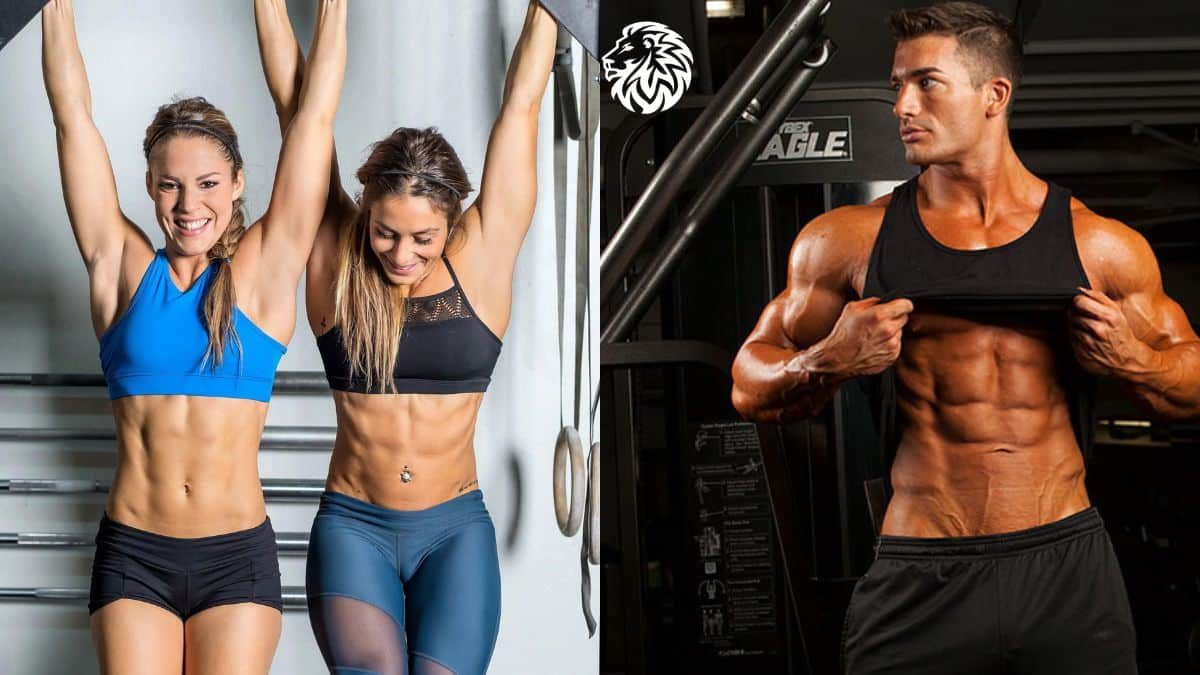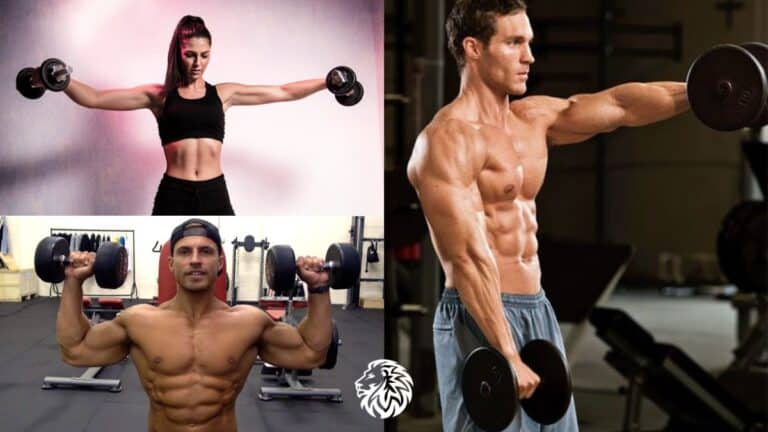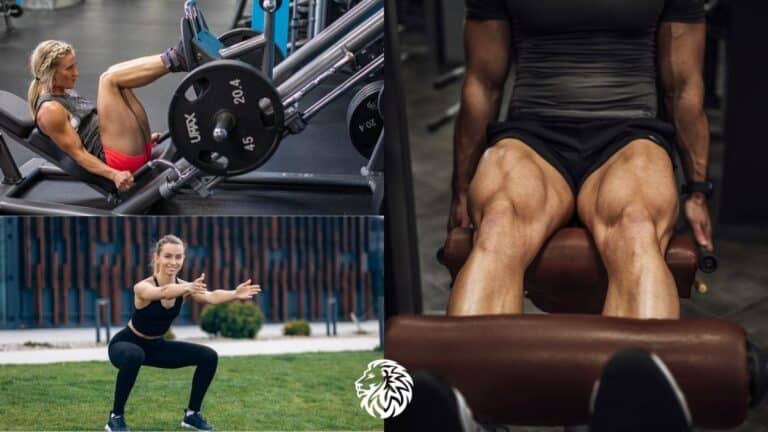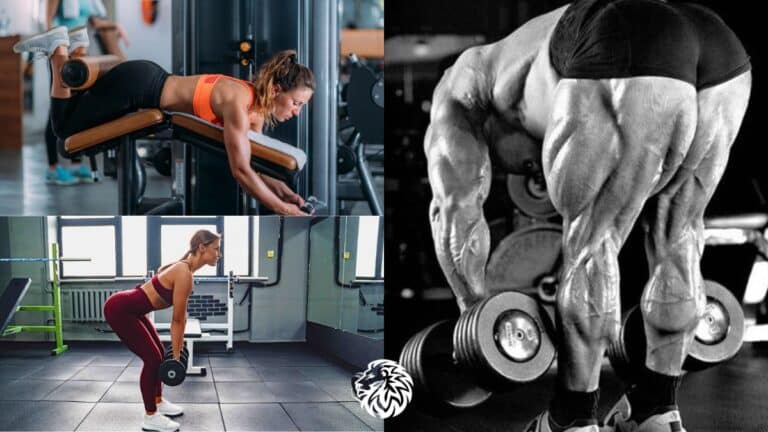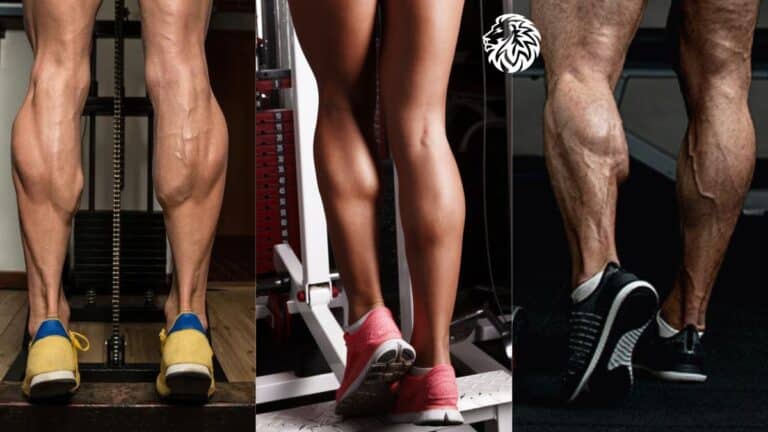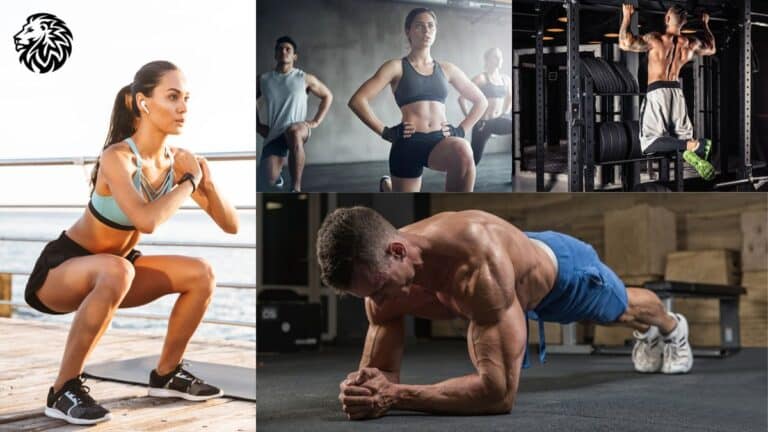Crunches, once the gold standard for abdominal workouts, have recently come under scrutiny for their limitations and potential pitfalls. While they do target a specific portion of the abs, they often neglect other core muscles, potentially leading to imbalances. Furthermore, incorrect form during crunches can strain the neck and lower back, diminishing the overall benefits.
The core is more than just a set of aesthetically pleasing muscles; it’s the powerhouse of the body. This group of muscles acts as a stabilizer, supports the spine, and plays a pivotal role in nearly every movement we make, from lifting groceries to swinging a tennis racket. Strengthening the core isn’t just about achieving a toned appearance—it’s about enhancing daily life functionality, reducing the risk of injury, and promoting overall physical health. Hence, it’s crucial to incorporate exercises that offer a comprehensive core workout, transcending the limitations of traditional crunches.
1. Plank
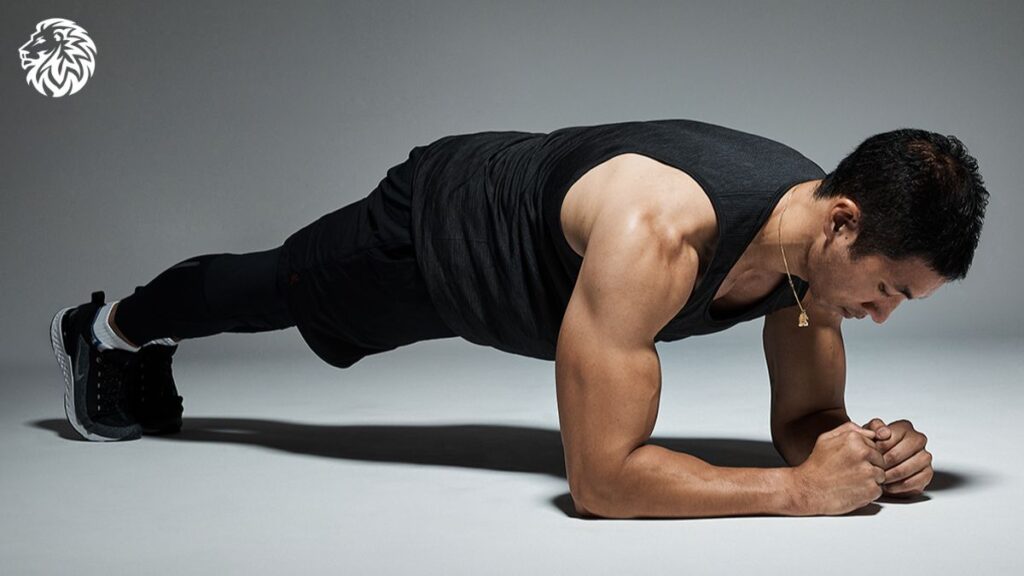
Description of the Exercise: The plank is a simple yet highly effective isometric exercise that involves maintaining a position similar to a push-up for the maximum possible time. To perform a basic plank:
- Begin in a push-up position with your hands directly under your shoulders.
- Keep your body in a straight line from your head to your heels, ensuring that your back is flat and your hips are not sagging or raised too high.
- Engage your core, glutes, and thighs, and hold this position, keeping your gaze slightly ahead of you.
Benefits:
- Whole Core Engagement: Unlike crunches, which primarily target the rectus abdominis, planks engage the entire core, including the transverse abdominis, obliques, and lower back muscles.
- Improves Posture: By strengthening the core muscles, planks can help in maintaining an upright posture, reducing the tendency to slouch.
- Enhances Balance: A strong core plays a significant role in balance and stability, which can be improved with consistent plank exercises.
Variations:
- Side Plank: This variation targets the obliques more intensely. Begin by lying on your side with your legs straight. Prop yourself up with your elbow directly below your shoulder and stack your legs, one on top of the other. Lift your hips so that your body forms a straight line. Hold, then switch sides.
- Forearm Plank: Instead of using your hands, this version is performed on your forearms, which can reduce strain on the wrists and intensify the core workout. Begin in the plank position but lower onto your forearms, ensuring they are parallel and your elbows are directly beneath your shoulders. Hold the position as you would a standard plank.
2. Hanging Leg Raises
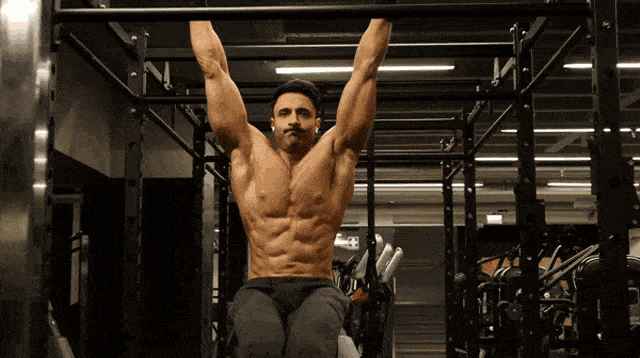
Description of the Exercise: Hanging leg raises are performed using a pull-up bar or any stable overhead bar from which you can hang. To perform the exercise:
- Start by gripping the pull-up bar with both hands, palms facing forward. Your arms should be fully extended, and your feet should be off the ground.
- Keeping your legs straight and together, engage your core and raise your legs in front of you until they’re parallel to the ground or as high as you can comfortably go.
- Slowly lower them back down, ensuring you control the movement and don’t just let gravity do the work.
Benefits:
- Targets Lower Abs: This exercise is particularly effective for engaging and strengthening the lower abdominal muscles, which can often be challenging to target.
- Improves Grip Strength: Holding onto the bar requires and simultaneously improves grip strength, benefiting forearm muscles and enhancing functional hand strength.
- Promotes Spinal Health: Hanging from a bar allows for spinal decompression, which can relieve back pain and contribute to better overall spinal health.
Variations:
- Knee Raises: Instead of keeping the legs straight, bend your knees and raise them towards your chest. This variation can be slightly easier and serves as a great starting point for beginners.
- Windshield Wipers: After raising your legs to be parallel with the ground or at a 90-degree angle with your torso, rotate your legs side-to-side like the motion of windshield wipers. This advanced variation engages the obliques and provides a rotational element to the core workout.
3. Russian Twists

Description of the Exercise: Russian Twists are a seated core exercise that focuses on rotational movements. To perform the exercise:
- Begin by sitting on the floor with your knees bent and feet flat.
- Lean back slightly, ensuring your back is straight, creating a V-shape with your thighs.
- Clasp your hands together in front of you, or hold a weight if you prefer.
- Engage your core and rotate your torso to one side, aiming to bring your hands towards the floor beside you.
- Return to the center and then rotate to the opposite side to complete one rep.
Benefits:
- Works the Obliques: The rotational movement of Russian Twists directly engages the obliques, the muscles on the sides of your abdomen.
- Promotes Rotational Strength: This exercise helps in developing strength for rotational motions, which are essential for various daily activities and sports.
- Enhances Balance: The seated V-position requires stabilization from the core, which can help in improving balance and stability.
Variations:
- Weighted Russian Twists: To increase the intensity, you can hold a dumbbell, medicine ball, or any weighted object in your hands while performing the twist. The added weight engages the muscles more, providing a more challenging workout.
- Feet-off-the-ground Twist: To further challenge your core stability, lift your feet off the ground while performing the twists. Keeping your feet elevated requires more balance and engages the core muscles more intensively.
4. Dead Bug

Description of the Exercise: The Dead Bug is a floor exercise that mimics the appearance of a dead insect with its legs in the air. To perform the exercise:
- Start by lying flat on your back on a mat, with your arms extended straight up towards the ceiling.
- Lift your legs, bending your knees at a 90-degree angle.
- Engage your core, ensuring your lower back is pressed firmly against the floor.
- Simultaneously lower your right arm behind your head and extend your left leg straight out, without letting them touch the ground.
- Return to the starting position and repeat with the opposite arm and leg.
Benefits:
- Engages Both Lower and Upper Abs: The combination of arm and leg movements effectively targets both the upper and lower abdominal muscles.
- Promotes Coordination: The alternating movement of limbs helps improve mind-muscle coordination and body awareness.
- Reduces Strain on the Lower Back: By pressing the lower back to the floor and maintaining this engagement, the Dead Bug exercise reduces the risk of straining the lower back, making it safe and effective.
Variations:
- Alternating Arm and Leg: Instead of moving opposite limbs simultaneously, you can challenge your coordination further by moving the same side arm and leg together.
- Weighted Dead Bug: To increase resistance and intensity, hold a dumbbell in each hand during the exercise. As you lower your arm behind your head, the weight will provide added resistance, further engaging the core muscles. Ensure you maintain proper form to avoid any strain.
5. Bird Dog

Description of the Exercise: The Bird Dog is a core-strengthening exercise performed from a hands-and-knees position. To execute the exercise:
- Begin in a tabletop position with your hands directly beneath your shoulders and your knees under your hips.
- Engage your core, keeping your spine neutral.
- Simultaneously extend your right arm straight ahead and your left leg straight behind you, aligning them with your body.
- Hold the position briefly, then return to the starting position.
- Repeat on the opposite side with the left arm and right leg extended.
Benefits:
- Improves Core Stability: The act of extending opposite limbs forces the core to stabilize, preventing the body from tipping to one side.
- Strengthens the Lower Back: The back-extending motion is beneficial for the muscles of the lower back, helping to prevent injuries and alleviate pain.
- Boosts Balance: The Bird Dog challenges and improves your sense of balance and proprioception, as you need to maintain stability throughout the movement.
Variations:
- Extended Hold: Instead of quickly returning to the starting position, hold the extended arm and leg out for a longer duration (e.g., 5-10 seconds) before switching sides. This intensifies the core engagement and stability challenge.
- Bird Dog Row: Holding a light dumbbell in one hand, perform the Bird Dog as described. When the arm is extended forward, pull the dumbbell back in a rowing motion, squeezing the shoulder blade. Extend the arm again before returning to the starting position. This variation adds an upper body component, engaging the back muscles further.
Common Mistakes to Avoid

When performing core exercises, ensuring proper form is crucial to maximize benefits and prevent injury. Below are typical mistakes and tips to avoid them:
- Plank
- Mistake: Sagging hips or raising the buttocks too high.
- Tip: Keep your body in a straight line from head to heels. Engage your core and glutes to maintain this alignment.
- Hanging Leg Raises
- Mistake: Swinging the legs for momentum.
- Tip: Engage your core to lift your legs in a controlled manner. Avoid using momentum; the movement should be deliberate and steady.
- Russian Twists
- Mistake: Only moving the arms without rotating the torso.
- Tip: Ensure you’re rotating your entire upper torso, not just moving your arms from side to side. Keep the spine straight and avoid hunching.
- Dead Bug
- Mistake: Arching the lower back off the ground.
- Tip: Press your lower back into the floor throughout the exercise. This ensures proper core engagement and protects the spine.
- Bird Dog
- Mistake: Overextending or arching the back when reaching out.
- Tip: Focus on lengthening the arm and leg without hyperextending the back. Keep the neck neutral, in line with the spine, and avoid looking up or tucking the chin excessively.
General Tips for All Exercises:
- Breathing: Remember to breathe consistently. A common mistake is holding one’s breath during exertion. Exhale during the challenging phase of the exercise and inhale during the easier phase.
- Core Engagement: Active engagement of the core is essential for all these exercises. Think of drawing your belly button towards your spine.
- Pace: It’s not about how fast you can complete the movements but the quality and control with which you execute them.
- Listen to Your Body: If you feel pain (not to be confused with discomfort or muscle fatigue), it’s essential to stop the exercise and reassess your form or consider consulting a fitness professional.
Incorporating these tips will not only help in avoiding common mistakes but also ensure that you get the maximum benefit from each exercise.
Conclusion
A strong, functional core is the foundation for a wide range of daily activities and athletic endeavors. While traditional crunches have their place, diversifying your ab workouts with exercises like planks, hanging leg raises, Russian twists, dead bugs, and bird dogs can provide comprehensive core engagement. This diversified approach not only targets various muscle groups but also promotes balance, coordination, and overall functional strength.
The journey to a robust core isn’t about aesthetic appeal alone—it’s about enhancing overall physical health, reducing the risk of injuries, and improving day-to-day functionality. By incorporating these superior exercises into your routine, you’re investing in a future of greater strength, stability, and agility. Embrace the challenge, focus on form, and soon enough, you’ll witness the transformative power of a well-rounded core workout.
